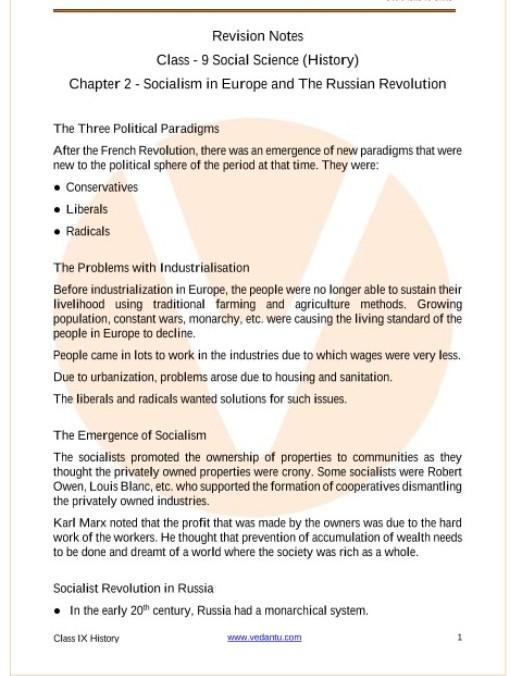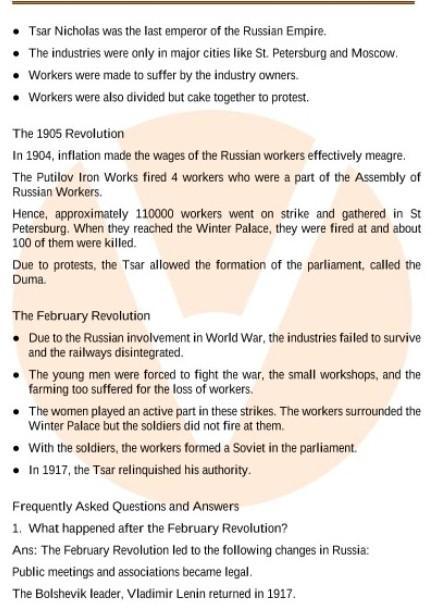Explanation:
Socialism in Europe and the Russian Revolution Class 9 Notes Social Science History Chapter 2
As per the previous 3 years’ examinations, special emphasis has been laid upon the following topics from this chapter and thereby students should pay attention on them.
Progress of Russian Revolution
The First World War and the Russian Revolution
Events and Effects of February and October Revolution of Russia
Social changes that were taken place in Russia.
The Age of Social Change
The French Revolution opened up the possibility of creating a dramatic change in the way in which society was structured. Not everyone in Europe, however, wanted a complete transformation. Some were ‘conservatives’, while others were ‘liberals’ or ‘radicals’.
Liberals: Wanted a nation which tolerated all religions. They argued for an elected parliamentary government, subject to laws interpreted by a well-trained judiciary that was independent of rulers and officials. They were not Democrats.
Radicals: Wanted a nation in which government was based on the majority of a country’s population. They disliked the concentration of property in the hands of a few, not the existence of private property.
Conservatives: They resisted change. After the revolution, they started accepting change provided it was slow and had links and respected the past.
Industries and Social Change: This was the time of economic and social change. Men, women, and children were pushed into factories for low wages. Liberals and Radicals who were factory owners felt that workers’ efforts must be encouraged.
Socialism in Europe: Socialists were against private property. They had different visions of the future. Some believed in cooperatives, some demanded that governments must encourage cooperatives.



